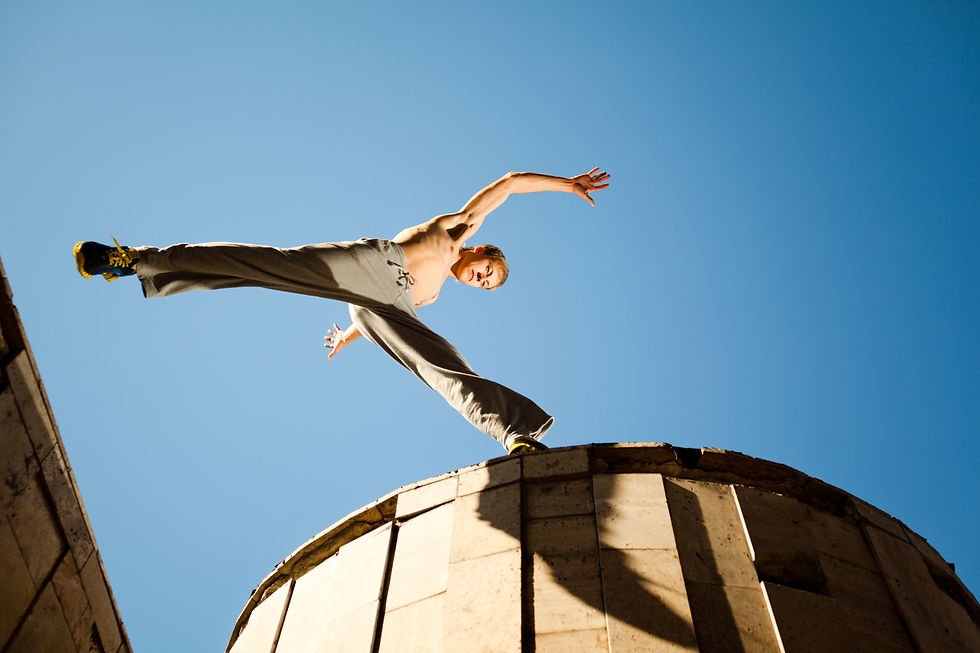Parkour in Urban Spaces: How Cities Are Embracing the Art of Movement
- Jessica Hall
- Sep 27, 2024
- 2 min read
Parkour, often described as the “art of movement,” has grown from a niche practice into a worldwide phenomenon. Originating in France in the 1980s, parkour has since spread across the globe, captivating urban athletes who challenge themselves to move efficiently through complex environments. Today, cities are beginning to embrace parkour as a legitimate sport, offering new spaces designed for free-running enthusiasts and integrating parkour-friendly architecture into urban planning.

The Basics of Parkour
Parkour involves navigating urban obstacles with speed, agility, and creativity. Practitioners, known as traceurs, use techniques like vaulting, jumping, climbing, and rolling to move through their environment as efficiently as possible. What sets parkour apart from other sports is its reliance on the natural urban landscape — anything from railings and staircases to walls and rooftops can become part of a parkour run.

Urban Spaces and Parkour
As parkour gains popularity, cities are starting to see the benefits of providing spaces where people can practice the sport safely. Dedicated parkour parks are popping up around the world, featuring purpose-built structures designed for free-running and trick movements. These spaces allow athletes to hone their skills in a controlled environment, reducing the risk of injury while still offering the thrill of a city-like setting.
Cities like London and Paris are leading the way in creating parkour-friendly urban designs. Certain parks and public areas are being built with obstacles and features that traceurs can utilize, transforming everyday urban landscapes into training grounds. This integration of parkour into urban design is helping legitimize the sport and offering new opportunities for athletes to practice and perform.
The Role of Social Media
As with many modern street sports, social media has played a key role in the growth of parkour. Platforms like Instagram and YouTube have given athletes a space to share their runs, tricks, and stunts with a global audience. Videos of daring parkour feats, such as rooftop jumps and extreme flips, have gone viral, inspiring a new generation of athletes to take up the sport.
This online exposure has not only fueled interest but has also helped connect parkour communities across different cities and countries. Today, parkour events and meet-ups are common, with athletes traveling to different cities to explore new landscapes and challenge their skills.
Parkour’s Future
Parkour is more than just a sport; it’s a philosophy of movement and overcoming obstacles, both physical and mental. As cities continue to embrace parkour, we can expect more public spaces to be designed with the sport in mind. Whether it's through purpose-built parks or adapting existing urban areas, the future of parkour is set to be one of growth, creativity, and urban exploration.




Comments